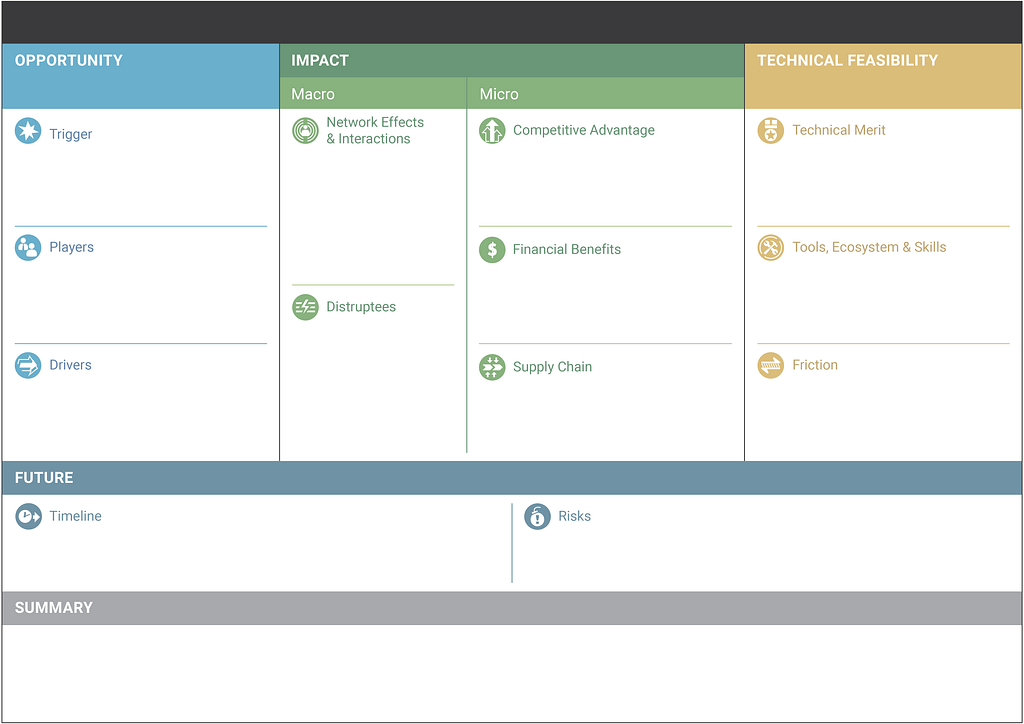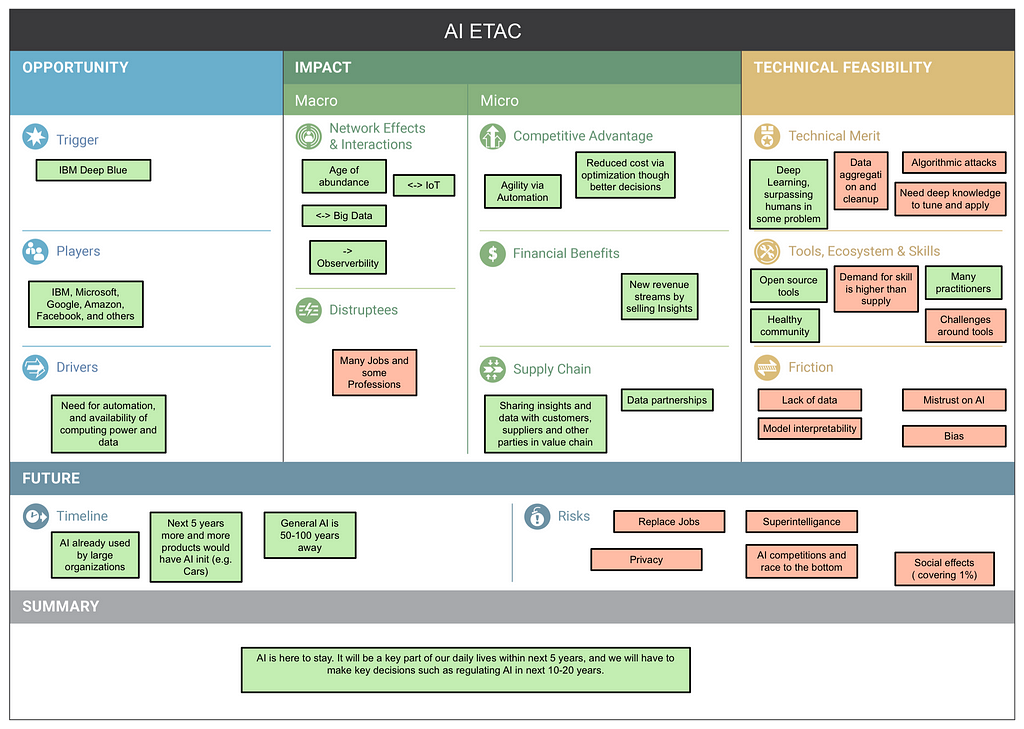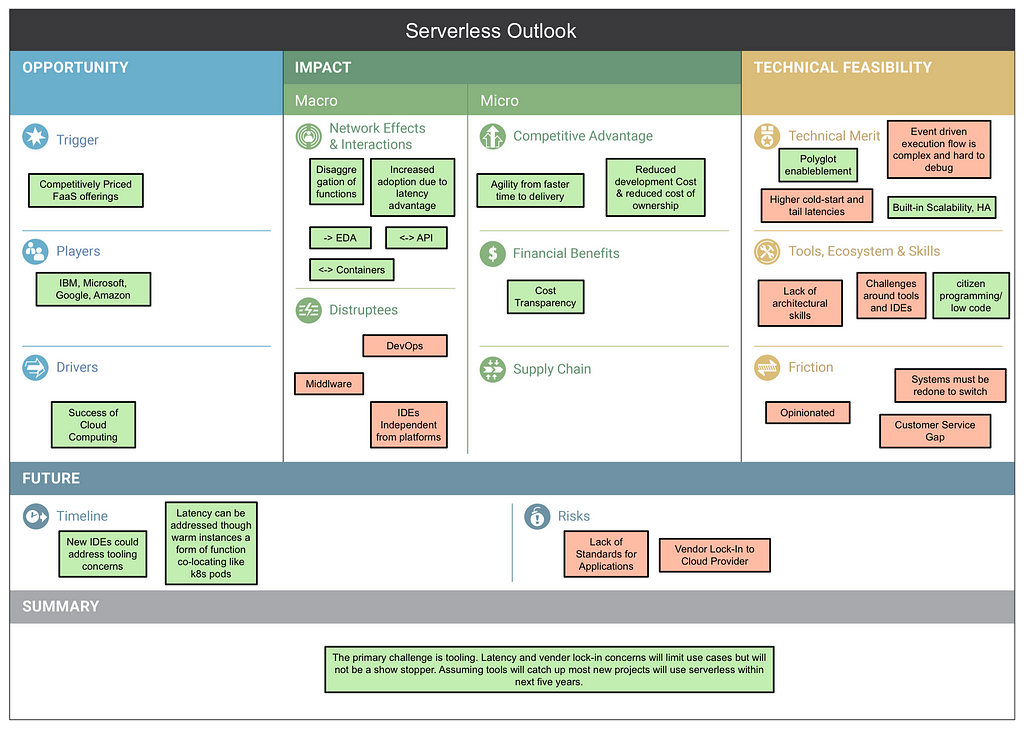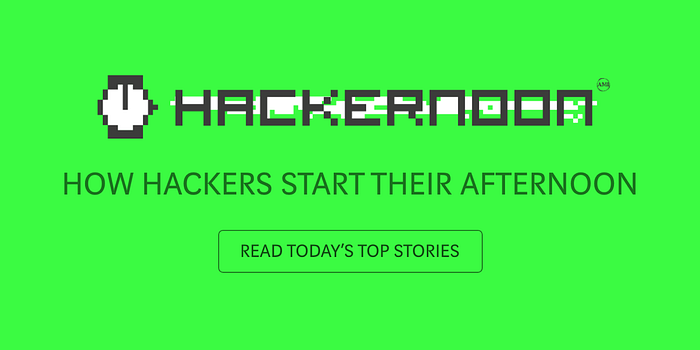Latest news about Bitcoin and all cryptocurrencies. Your daily crypto news habit.

Introduction
In his “Law of Accelerating Returns”, Ray Kurzweil claims that “An analysis of the history of technology shows that technological change is exponential”.
In other words, as time passes, technology changes faster. I have indeed made the same observation, and I am sure you would also agree.
To survive in this fast-changing world, both the organizations and practitioners must understand both the current technology landscape as well as its ebbs and flows. In a shifting world, prevailing advantages are fleeting. Organizations that can master change and ride technology waves owns the future.
Emerging technologies causes most of the changes to the technology landscape. They create new segments — such as self-driving cars, destroy existing segments — such as GPS trackers, and transform some segments — such as automobiles. As we can learn from the fate of companies like Kodak, Nokia, Encyclopedia Brittanica, and Sun, key emerging technologies can make or break organizations. To survive, organizations need to identify, utilize, and sometimes shape emerging technologies.
Riding the Technology Waves
Emerging technologies makes a loud appearance, which is good news. Each is accompanied by a hype, which promises to change the world, which promises vast riches, and which promises to solve the world hunger. So they are hard to miss.
However, all that hyped do not have an impact. Not all emerging technologies live up to their promise. Some are not relevant; some have died, and some have merely survived. However, some have woven themselves into today’s world so well that we do not even notice them. So organizations and practitioners must choose carefully.
Both organizations and practitioners need to evaluate emerging technologies for their relevance, impact, and the probability of success. They need to decide either to ignore or to embrace. Embracing means investing, utilizing and even shaping the technology itself. Either choice, if picked wrong, can be costly.
Every year, as a part of annual planning, most organizations make these decisions. They measure; they analyze, and they plan. Often top management wrestles with the choice. This dilemma is true not only for big organizations but only for startups, which even in a short tenure, see several emerging technologies and have to make the same decisions.
Although it is a regular decision, which many organizations must make yearly, there is no widely accepted framework for evaluating emerging technologies.
Such a framework, if available, provides several advantages.
- It makes it easier to decide what aspects to include and what to leave out.
- With a framework as a shared understanding, it is easier to discuss a technology analysis with others, especially customers and partners.
- With a framework as a shared understanding, it is easier to communicate and educate others about technology, and it is easier to learn about technology from others.
- Different groups can learn from each others analysis of an emerging technology.
- The framework itself can be successively improved collecting inputs from practitioners.
The best example of such a framework is the Business Model Canvas by Alexander Osterwalder. It is a set of questions and a narrative designed to critically analyze different aspects of business models for organizations: the value proposition, customer segments, channels, and revenue pitted against activities and costs. It is often used for startup planning and also a useful tool for communicating business models.
Emerging Technology Analysis Canvas
We propose the Emerging Technology Analysis Canvas (ETAC), which is a framework designed to address the aforementioned need for evaluating emerging technologies. Inspired by the Business Model Canvas, it represents different aspects of technology visually on a single page.
ETAC is based on a set of questions arranged around a logical narrative, and they probe the technology. Based on our extensive experience with emerging technologies, we argue that an emerging technology must fulfill the following four conditions to be successful.
- The identification of a problem and related innovation that addresses the problem, which we call a trigger. (We consider that both the problem and innovation must come in conjunction because often the innovation changes our perception of the problem).
- The technology needs to have a significant potential impact. Often the impact may extend beyond the initial problem.
- The technology has to be feasible given the available resources.
- The technology has to navigate risks related to technology development and adoption. For example, the technology must develop and be adopted quickly enough to justify any investment.
As the following figure depicts, ETAC visually represents above four questions in one page. The representation is concise, compact, and comprehensible in a glance.
 Emerging Technology Analysis Canvas
Emerging Technology Analysis Canvas
Following only provides an outline for understanding. The ETAC Specification discusses the canvas in much more details with examples and describes the methodology.
Let us explore each section in the Canvas in detail.
The opportunity
- Trigger: A problem and a solution that captured broader imagination that later evolved to a broader technology promising to solve broader problems.
- Players — Organizations or individuals who are actively improving or using the technology to solve problems.
- Drivers: external forces that positively impact the technology such as legislation.
Impact
It is important to note that impact is analyzed with respect to potential future and not limited to the current state of the technology.
The ETAC considers two types of impacts: macro and micro. The macro impact captures the effects of technology on the world as a whole. The micro impact captures the impact seen by individual organizations as part of the supply chain.
Macro Impact
- Network effects and Interactions: A technology has network effects if the increased adoption increase the technology’s value for existing users thus creating a positive feedback loop.
- Distruptees: — What technologies or industries will be affected by the emerging technology?
Micro Impact
- Competitive Advantage: how does the emerging technology affect competition between organizations?
- Financial Benefits: How does the technology affect the bottom line of organizations.
- Supply Chain: this represent activities that are carried out starting from raw materials and skills until the product or a service is delivered and consumed by the end user. This section discussed how the technology affects the supply chain.
Feasibility
We have observed that technologies, while they are growing, create a promise to their prospective users. We consider that the promise includes both potential use cases and benefits of the proposed technology.
- Feasibility — Feasibility in ETAC evaluates the probable technical possibilities of the promise.
- Technical Merit — This discusses technology breakthroughs the technology has made as well as any technical limitations.
- Tools, Ecosystem, & Skills — This discusses the availability of required skills, tools and best practices, and a community.
- Friction — What kind of friction will the emerging technology face in its deployment? Here we only consider technical friction, and nontechnical considerations are discussed under Risks.
Future
- Timeline: What are the key possible milestones in the technology development?
- Risks: What are risks that might limit the technology deployment? This includes non-technical risks as well. We can think of these as the inverse of drivers.
Summary
The summary section discusses possible technology development and deployment scenarios while weighing other parts of the ETAC.
Examples
Following two examples shows the ETAC applied to emerging technologies: Artificial Intelligence and Serverless. You can find a detailed discussion of each of the ETACs from ETAC Specification.
 Artificial Intelligence ETAC
Artificial Intelligence ETAC Serverless ETAC
Serverless ETAC
Conclusion
Emerging technologies shape the fast-moving technology landscapes. Organizations grow and secure there future by selecting and investing in technologies that will shape their industries and markets. Organizations assess the emerging technologies and consider investments annually as part of their planning processes.
However, there is no shared framework for assessing emerging technologies. This makes the organization’s analysis ad-hoc, make broader discussions hard, and sharing and reusing knowledge almost impossible.
We presented “Emerging Technology Analysis Canvas” (ETAC), a framework to assess an individual emerging technology as a solution to this problem. Inspired by the Business Model Canvas, It represents different aspects of technology visually on a single page. This approach includes a set of questions that probe the technology arranged around a logical narrative. The visual representation is concise, compact, and comprehensible in a glance.
It provides
- a logical framework to assess the emerging technologies
- a framework to teach, to learn, and to discuss different aspects of the technology
- a brainstorming tool when trying to understand emerging technologies.
You can find more details from ETAC specification.
We welcome and appreciate any feedback, changes, or contributions the canvas. Please send a pull request, create a GitHub issue, or send a mail to srinath@wso2.com.
Hope you found this interesting. Serverless Outlook, an ETAC methodology based analysis of Serverless technology will be released soon. To receive updates to ETAC and ETAC based emerging technology analysis, please subscribe to our Global Technology Outlook Updates Newsletter.
We Propose the Emerging Technology Analysis Canvas (ETAC) was originally published in Hacker Noon on Medium, where people are continuing the conversation by highlighting and responding to this story.
Disclaimer
The views and opinions expressed in this article are solely those of the authors and do not reflect the views of Bitcoin Insider. Every investment and trading move involves risk - this is especially true for cryptocurrencies given their volatility. We strongly advise our readers to conduct their own research when making a decision.
